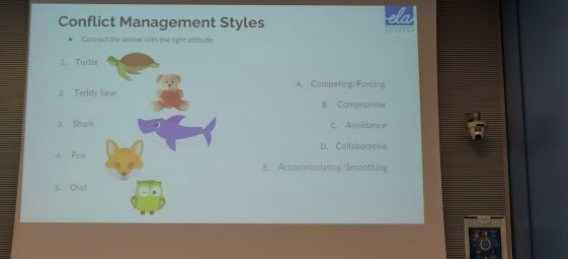BOLONIA (ITALY) 2 -9 OCTOBER 2021
PRESENTATION
The group of teachers attending this course is composed of six people from Romania and three Spaniards.
To introduce ourselves, we write three characteristics, one of which is false. The rest must guess the false one.
We conclude that it is a good strategy to get to know each other. It can even be used to review the subject before an exam.
EARLY SCHOOL LEAVERS
Using a digital tool www.menti.com we start from the interests and expectations of the group members regarding the course.
We looked for a common definition of what early school leaving means in the two reference countries and concluded with the EU definition.
We went on to analyse the factors that cause early school leaving. First, using cooperative work techniques, we analysed the reality of each of the two countries and then the course instructor showed us the European reality. Always taking into account individual, family, social and school factors.
Subsequently, always using collaborative techniques, we analyse the causes and consequences of these factors.
EMOTIONAL LEARNING
First we worked with a dynamic to learn to identify emotions and how to use this identification to improve the learning process of our students.
We then worked on Goleman's five pillars of emotional education.
We focused on the importance of working on empathy, starting by identifying it as opposed to other attitudes. In this sense, active listening is identified and valued as a very important part of the teacher's attitude towards the class group.
CONFLICT AS AN OPPORTUNITY
We start from the premise that conflict is something inherent to human relationships, therefore, as educators of human groups we are going to equip ourselves with tools to use conflicts as an opportunity to enrich the group.
Through some work techniques we learn to identify conflicts, the emotions that can hide behind them, factors that cause them to arise and ways to take advantage of them to improve group relations.
To use conflict as an opportunity, we propose to follow three steps:
- Identify it, define it and see the real reasons that have provoked it, what could be behind the conflict?
- Identify the words, expressions and behaviours that have generated it and may cause it to be repeated and those that will cause it to "deflate".
- Taking into account all of the above, establish the basis for a positive resolution of the conflict.
CREATING AN ENVIRONMENT CONDUCIVE TO COLLABORATIVE LEARNING
We do this in a practical way, analysing the characteristics that a group must have in order to implement collaborative learning, through the implementation of various techniques and dynamics.
ESTABLISHING AN ENVIRONMENT OF SAFE SOCIAL RELATIONS
We analyse different attitudes that can occur in the face of possible conflicts or in teamwork in the classroom. To do so, we compared the attitudes with characteristics of animals such as foxes, turtles, sharks ..... and analysed them according to the Thomas-Kilmann theory.
We concluded that all ways of acting are necessary depending on what kind of task or situation we need to manage.
From this analysis we worked on "models" of students that we can find in our classrooms and how to take advantage of those behaviours that in principle can be annoying (the person who always interrupts, the one who never participates, the one who thinks he/she knows everything.....).
In this line, we analyse how we can adopt a fixed position, in which we think that students are like this and cannot advance, or a position of growth in which we focus on the actions and not on the person, with the possibility of growth and advancement. We do this by analysing expressions we use when we address students.
WE DIFFERENTIATE BULLYING FROM OTHER CONFLICTS
Bullying differs from conflict in three fundamental characteristics:
- Persistent
- Unequal
- One of the parties is not able to defend himself/herself.
We spent very little time on actions to prevent or solve bullying beyond what we have already worked on.











No hay comentarios:
Publicar un comentario
Comment here